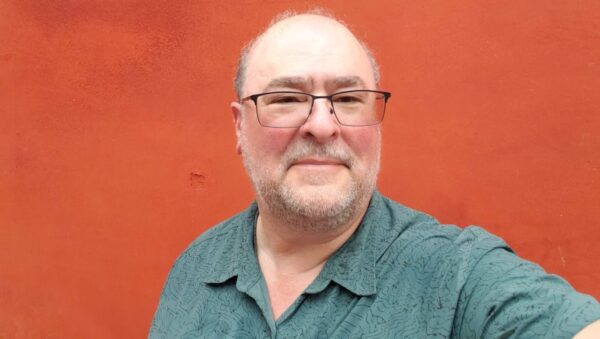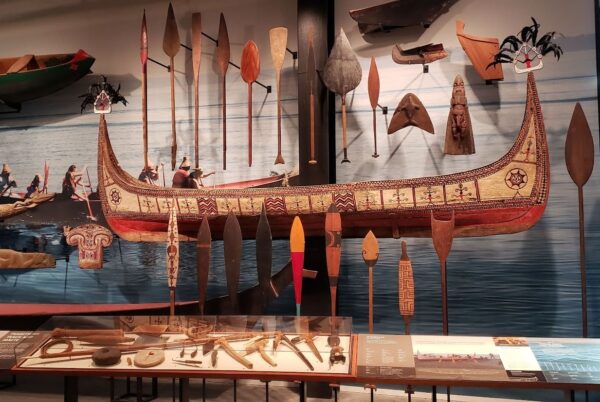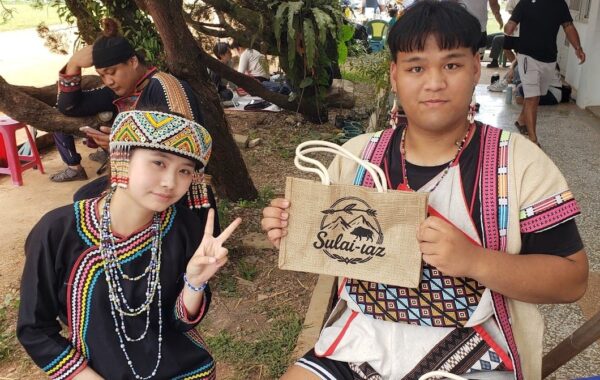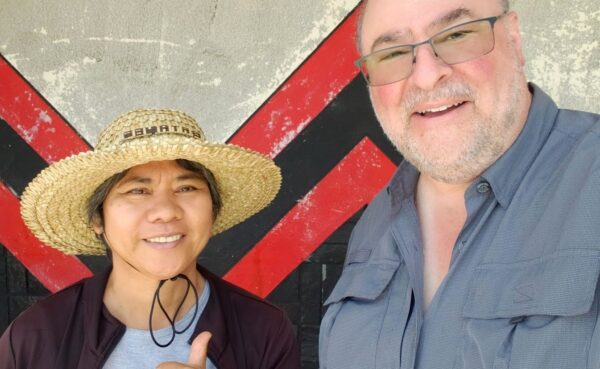 When Seattle resident Michael Jacobson visits Taiwan, he’s not on a foodie quest. Nor does he obsess about drinking the finest oolong tea or taking photos of the island’s vibrant temple culture. But that’s not to say he doesn’t enjoy those aspects of East Asia’s most intriguing destination. It’s rather that his deep interest in Taiwan’s indigenous peoples, and his desire to contribute to the preservation of their unique cultures, has led him on an ongoing mission.
When Seattle resident Michael Jacobson visits Taiwan, he’s not on a foodie quest. Nor does he obsess about drinking the finest oolong tea or taking photos of the island’s vibrant temple culture. But that’s not to say he doesn’t enjoy those aspects of East Asia’s most intriguing destination. It’s rather that his deep interest in Taiwan’s indigenous peoples, and his desire to contribute to the preservation of their unique cultures, has led him on an ongoing mission.
Michael’s first encounter with Taiwan came back in 1986, when he and his now wife, Cara, studied Mandarin Chinese for two months in Taipei. Taiwan was still under martial law at that time, imposed by the KMT (Chinese Nationalist) regime when Chiang Kai-shek and his supporters fled to Taipei at the end of the Chinese Civil War. Restrictions on free speech and political activity weren’t lifted until the following year. Over the following decade Taiwan evolved into the multi-party democracy it is today.
In terms of culture, Taiwan in 1986 was representing itself as very much a Han Chinese society, Michael recalls. Arts and traditions which enjoyed the KMT’s approval were reinforced through the media and the education system. There was little space for minority cultures, be they indigenous, Hakka, or Hoklo.
The couple wanted to master basic Mandarin before visiting China, where they eventually spent four months exploring some of that vast country’s most remote corners. After that adventure they travelled through Southeast Asia to Australia and New Zealand, returning to the US a full year after their departure.
After working for several years, he returned to grad school, where he applied for a foreign language fellowship to study for the summer. When he was offered a full year’s support, he didn’t hesitate to expand his knowledge of Chinese. ‘I did the summer quarter in Taipei by myself then Cara joined me. That was 1994, so martial law was a thing of the past. It was around that time that Chen Shui-bian was elected Taipei’s mayor and the excitement in the streets was amazing to witness’, says Jacobson.
Chen, more than a decade the most popular politician in the pro-independence DPP, became Taiwan’s first non-KMT president in 2000. He served two terms in the top job, but soon after leaving office he was brought down by a corruption case.
Throughout the couple’s second sojourn in Taiwan, Michael hit the books while Cara worked at the central government’s Environmental Protection Administration (now the Ministry of Environment). There she focused on the Formosan landlocked salmon, a remarkable fish found only in a handful of high-altitude streams in Taiwan’s interior. Thanks to human intervention, it’s been brought back from the brink of extinction — but climate change remains a long-term threat to the survival of the species.
During their free time the couple explored as much of the island as they could. In the capital, they discovered an authentic indigenous bar which they returned to several times. ‘It was the place where indigenous folks hung out. It wasn’t contrived’, he says. Through it, he got to know indigenous people living and working in Taipei. ‘After travelling around China, I had a special interest in minority peoples, but my focus on Taiwan’s Austronesian population was still a few years in the future’.
 Becoming a collector
Becoming a collector
Back in Seattle, he chanced upon another bar decorated with woodcarvings that he recognised as the work of Paiwan artists. (The Paiwan people, most of whom live in Taiwan’s south, are the second largest of the island’s indigenous tribes.) They also had two traditional boats from Orchid Island that had been brought to the US in the mid-1970s. He first bought the boats and then the carvings. Since then, he’s built up a collection of around 100 indigenous artefacts. ‘Some of them are as small as a comb or a knife. But I also have a carved lintel from a Paiwan house’.
Michael has been in touch with a Paiwan community about returning the lintel, but nothing has been decided so far. It may go to a museum, he says, and some of the Paiwan people he’s met are open to the idea of it staying in the US as a kind of cultural emissary.
On top of those treasures, he also owns 1,000-plus postcards of Taiwan, all printed during the 1895-1945 period of Japanese colonial rule. Many of them served a propaganda purpose, demonstrating how Tokyo was ‘civilising and developing’ its colony. Jacobson says the reemergence since the 1990s of what he calls ‘Taiwan’s Japanese layer’ has been fascinating. Almost everyone who grew up during the colonial period has passed, yet the careful restoration of landmarks like Taipei’s Nishi Honganji and Chiayi’s Hinoki Village gives several urban neighbourhoods a quasi-Japanese ambiance.
A trove of images
Among the acquisitions Michael has made is a stack of material left by an American specialist in disease control who worked on malaria eradication projects in southern Taiwan and on Orchid Island in the 1950s. That bundle included a great many photographic slides and around an hour of 16mm film footage. Michael is hoping an institution in Taiwan or the US can fund the digitization of the film, so it can be preserved for and enjoyed by future generations.
He also owns a photobook from 1937 of images from Orchid Island. ‘The images are especially interesting to 21st-century people living on Orchid Island, so with their cooperation and input I’m putting together a book’, Michael says. He emphasises that the forthcoming publication ‘will give the Tao themselves a voice’.
Michael has especially fond memories of his first visit to Orchid Island in 2018. From the Tao people, the island’s Austronesian inhabitants, he learned about ‘the challenges they face, which range from economic and cultural modernity undermining traditional ways of living, to the low-level nuclear waste that’s been stored on the island in controversial circumstances’.
‘I got invited to events which tourists seldom see, such as flying fish ceremonies and a boat launch ceremony. The generosity they showed was incredible’, says Michael.
The 2018 trip lasted three months, almost all of which he spent in indigenous communities. ‘I think because I showed I was genuine, showed interest and knowledge of their culture, and trying to offer some kind of cultural repair, people were really open and generous, and curious how I’d come by the objects in my collection’, he remembers.
When Michael returned to Taiwan earlier this year, he made progress on the book project. Among other highlights, he says, were attending the Fifth World Congress of Taiwan Studies in Taipei, and being shown the jaw-dropping private collection of indigenous treasures collected by a Taiwanese man who’s now 100 years old.
He hopes to return in 2026 — ‘to get the book over the finishing line’ — and perhaps attend the once-a-decade full-scale paSta’ay festival of the SaiSiyat indigenous people in Taiwan’s northwest.
Taiwan’s fantastic diversity

‘Many of those traditional structures have eroded, yet traditional chiefs in Paiwan communities still hold considerable influence’, he says. ‘The way in which indigenous iconography has been integrated into Christian churches is very intriguing, and you’ll see two or three churches in each village. When Paiwan couples get married, they do so in full tribal regalia’.
Each indigenous group, he’s noticed, ‘is trying to judge what traditions to preserve from the old times, and what they should discard or adapt.’ Inevitably some communities are more assimilated than others. ‘They’ve had to navigate several colonial and cultural waves. But there’s still a lot of authentic indigenous culture to be seen and experienced. These communities are typically quite receptive to visitors willing to have cultural experiences. People who come to Taiwan and don’t get some experience in an indigenous community are really missing out’.
If reading about Michael’s Taiwan adventures has whetted your appetite for travel, contact Life of Taiwan today and let us begin planning a private guided tour of Taiwan that perfectly aligns with your expectations and interests.

